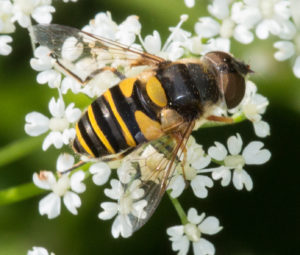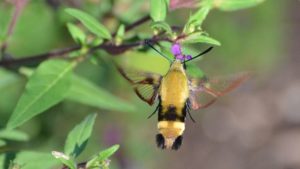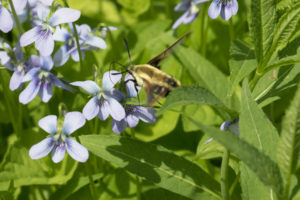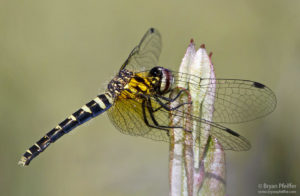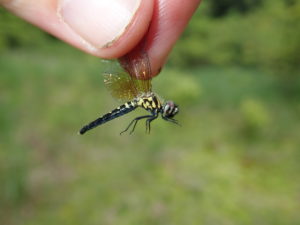Wanna-Bees
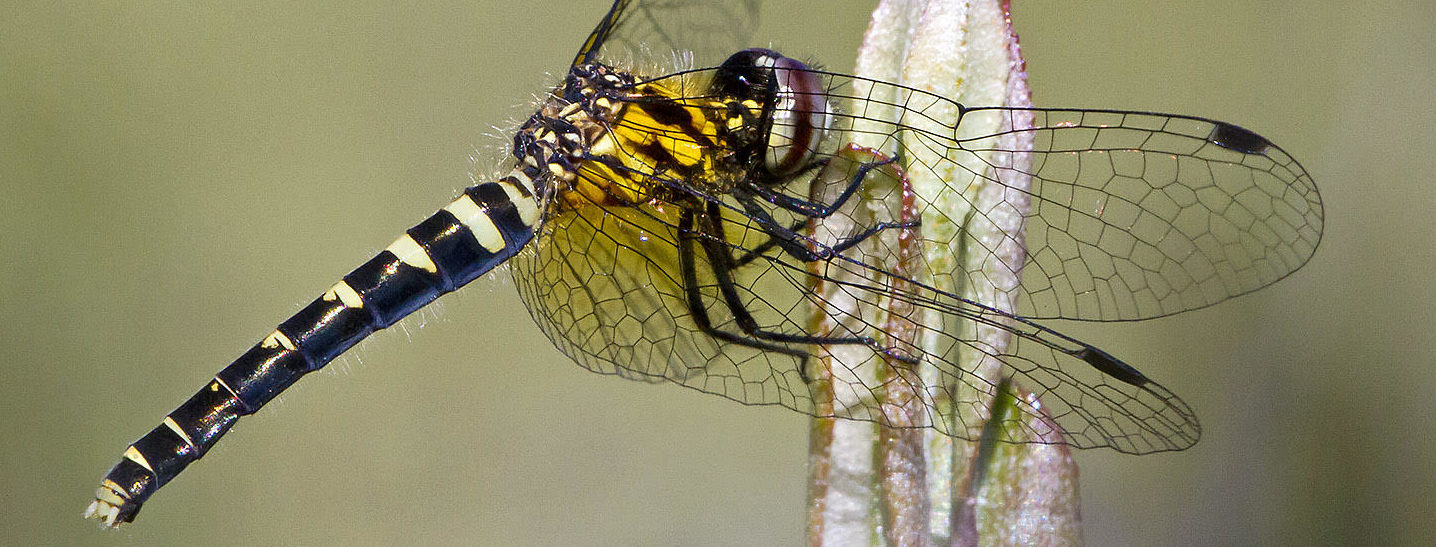
This is the first in a series of posts celebrating our native insects and pollinators. Come to BugFest on June 30th to learn more!
Feature photo by Bryan Pfeiffer
You know a bee when you see one, right? Think again! We’re hardwired to recognize those yellow and black stripes when we see them. But most of Vermont’s 300 native bees aren’t black and yellow at all, and dozens of other insects are masquerading as bees in your garden right now! Dressing in black and yellow, it turns out, is a great way to make predators exercise caution and give you some space. Check out these three wanna-bees we discovered this weekend in some gardens and bogs around northern Vermont.
Transverse Flower Fly (Eristalis transversa) – Photo: Josh Lincoln
While this bug is a true pollinator of a wide range of flowers, it is a fly, not a bee! Bees have two pairs of wings, but flies just have one. And you’d never find such large compound eyes on a bee.
Snowberry Clearwing Moth (Hemaris diffinis) – Photos: Andy Reago & Chrissy McClarren (left) and Sean Beckett
This bee mimic sports a long, curling proboscis nearly as long as its own body, which it uses to sip nectar from flowers in flight. Its dense hairs perfectly resemble a bumblebee, but you’d never find a stinger on this moth!
Elfin Skimmer (Nannothemis bella) – Photos by Bryan Pfeiffer (left) and iNaturalist user CBuelow45
Though this miniature dragonfly is a voracious insect predator, (black flies be warned!), it is a great snack for many bird species. The females have made the most of their bee-sized stature by evolving a black-and-yellow striped abdomen to fool predators.
Want to learn more about the fascinating lives of lesser-known insects? Come to BugFest on June 30th at North Branch Nature Center. All-day fun and learning for all ages!

